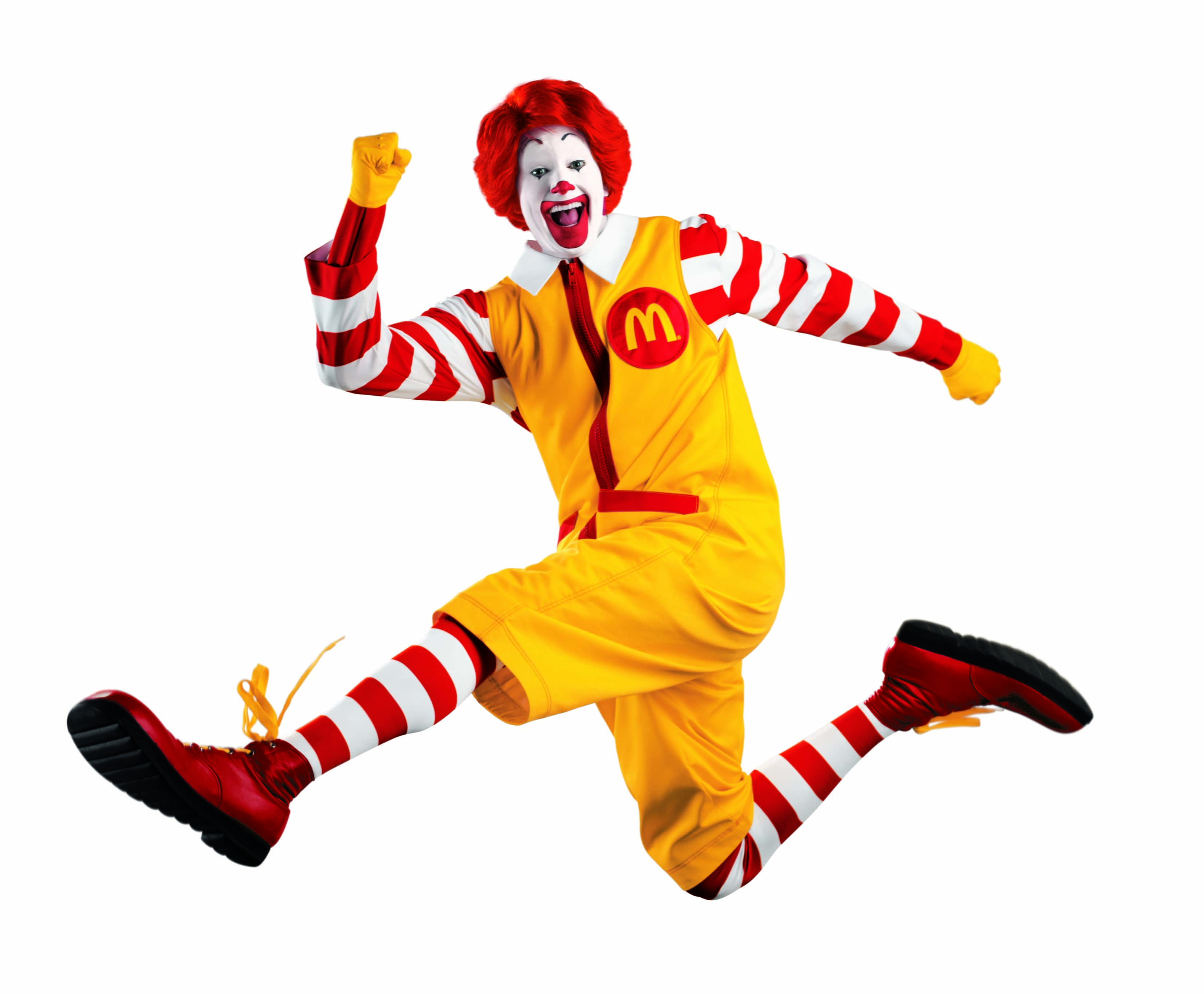McDonald's Mascots: A Deep Dive Into The Characters & History!
Ever wondered about the enduring appeal of a clown, a purple blob, and a hamburger-headed chef? The whimsical world of McDonald's mascots, from Ronald McDonald to the Hamburglar, is a fascinating blend of marketing genius and cultural nostalgia that has captivated generations.
The story of McDonald's is more than just about fast food; it's a narrative woven with unforgettable characters, each designed to entice and entertain. These mascots, inhabiting the vibrant, fictional realm of McDonaldland, became synonymous with the brand, etching themselves into the collective consciousness of the public. They were the faces of a global empire, the friendly figures who welcomed us to the golden arches and the promise of a quick, convenient meal.
But who were these individuals behind the makeup, the costumes, and the carefully crafted personas? Let's delve into the origins and evolutions of these iconic figures and their impact on the world of advertising and beyond.
| Character | Description | Key Features | Notable Appearances | Voiced By/Portrayed By |
|---|---|---|---|---|
| Ronald McDonald | The quintessential mascot of McDonald's, a jovial clown. | Red hair, yellow jumpsuit, red shoes, and signature smile. | TV commercials, in-store appearances, promotional materials. | Willard Scott (initial portrayal), many others over the years. |
| Hamburglar | A mischievous character with a penchant for stealing hamburgers. | Black and white striped outfit, mask, and a love for burgers. | McDonaldland commercials, various promotions. | Howard Morris (most famously), others. |
| Grimace | A large, purple, amorphous character. | Purple fur, large smile, often seen alongside Ronald McDonald. | Commercials, promotions. | Various actors. |
| Birdie the Early Bird | A yellow bird, introduced to promote breakfast items. | Yellow feathers, pink jumpsuit, flight cap, and scarf. | McDonaldland commercials, breakfast promotions. | Russi Taylor (voice of Minnie Mouse) |
| Speedee | The original McDonald's mascot, a chef with a hamburger head. | Chef's hat atop a hamburger-shaped head, a winking expression. | Early McDonald's branding and signage. | N/A |
| Mayor McCheese | A character, that is a mayor with a Cheeseburger as a head. | Is a mayor, wears a suit and a bow tie. | Appeared in commercials in early years. | N/A |
| Fry Kids | Representing French Fries. | They were a group of animated creatures, usually seen playing. | McDonaldland | N/A |
For more detailed information on Ronald McDonald and the evolution of McDonald's mascots, you can check out the McDonald's official website or reputable sources such as McDonald's Corporate Website.
The genesis of McDonald's mascots can be traced back to a simple, yet powerful need: to stand out. In an era where speed and efficiency were becoming increasingly important, McDonald's sought to differentiate itself. Speedee, the initial mascot, embodied this concept. A chef with a hamburger for a head, Speedee was a visual representation of the fast service the restaurant promised.
However, the company quickly realized the potential of a more charismatic figure. Enter Ronald McDonald, the clown who would become the face of a global brand. His introduction in 1963 marked a pivotal moment. The playful persona, designed to appeal to children, proved to be a masterstroke. Ronald McDonald wasn't just a mascot; he was a friend, an ambassador, and the embodiment of the McDonald's experience.
The creation of McDonaldland further solidified this strategy. This fantasy world, populated by a cast of eccentric characters, offered a cohesive narrative. The Hamburglar, with his insatiable desire for burgers, and Grimace, a large purple creature, provided the dynamic that captured the imagination of children and, by extension, their parents.
Birdie the Early Bird was introduced in 1980, to cater to the breakfast market. She was a yellow bird and was the first identifiable female character. The visual link between McDonald's and nighttime, a pointed attempt to get the public to associate fast food with dinner, was successful and further emphasized by the introduction of Mac Tonight in the late 1980s. Mac Tonight, with his piano-playing persona, was an attempt to associate the brand with evening meals.
The power of these mascots extended beyond mere advertising. They appeared in television commercials, on packaging, and in in-store promotions. Statues of Ronald McDonald greeted customers, making the brand instantly recognizable. These characters became integral to the McDonald's experience, shaping the company's image and its relationship with its customers.
Even today, after changes in marketing strategies and the evolving trends, the impact of these characters is still evident. While Ronald McDonald's presence may be less frequent in modern advertising, he remains one of the most recognizable mascots globally. The legacy of these mascots is a testament to the power of effective branding and the lasting influence of clever marketing.
Beyond the individual characters, the evolution of McDonald's mascots reveals broader shifts in marketing approaches. The move away from mascots in general, reflected a change in focus, with the company concentrating on different strategies. And a new mascot of DGAF branding was also released.
McDonald's has also undergone a marketing leadership shuffle. Alyssa Buetikofer, currently marketing chief of McDonalds Canada, will assume the role of chief marketing and customer experience officer on Feb.
The stories of these characters are closely intertwined with the history of McDonald's. They tell the story of a company's evolution, its successes, and its ability to adapt to changing times. From Speedee's early representation of speed to the carefully crafted persona of Ronald McDonald, these mascots are a reminder of the power of imagination, creativity, and the enduring appeal of a well-crafted narrative.
So, the next time you pass a McDonald's, take a moment to appreciate the characters, the marketing strategies, and the cultural impact that these iconic figures have had on the world. They are more than just mascots; they are a piece of the cultural landscape.

 (1).png)
